Rabbit Farming
Rabbit Farming in India
The operation of rabbit rearing is considered very simple. It is becoming very popular as a rabbit rearing business in India. In India the Government has approved rearing and meat production of various species of rabbits. Bhumika animal breeder farm provided best rabbit farming services in India. For rabbit rearing and meat consumption the breeds of rabbit are completely domestic and foreign which were imported into India from the Soviet Union and England. The rabbit breeds described in this article are not associated with wild rabbits. Rabbit is mainly reared for production of wool andmeat. Due to high fertility, the meat production capacity of rabbit is much higher than other animals. Most of the farmers have a belief that rabbits can reared only in cold regions but there is nothing like that. For meatrabbit (boiler) can be reared in 35 to 40 degree centigrade temperature.
Even on a small scale, at a cost of three lakhs, up to eight lakhs are being earned annually. The demand for its meat is mostly high in the metropolitan cities like Kerala, Tamil Nadu, Andhra Pradesh, Assam, Arunachal Pradesh, Calcutta, Odisha, Jharkhand, Bihar, Uttarakhand, Telangana etc. Mumbai, New Delhi, Goa, Madhya Pradesh, Uttar Pradesh, Gujarat, and Punjab its demand is increasing in Haryana. The protein content in 100 grams of rabbit meat is 23%, the total fat is 3.5%. The amount of cholesterol is 123 mg. Apart from this; its meat is very tasty and nutritious, which people like to eat with fervor. It is believed that its meat is very useful for heart patients, the demand for small rabbit babies is also increasing in every state of India because small rabbits look very beautiful in appearance. If you want any information about rabbit farming in India then feel free to ask with us.
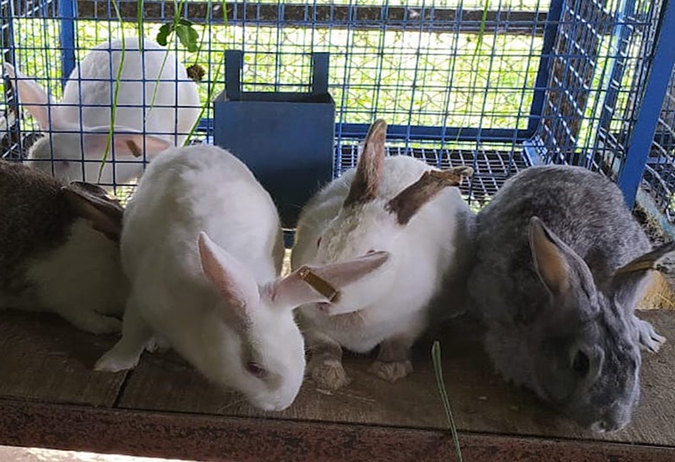
Commercial Rabbit Farming in India
Here I am sharing with you some rabbit breeds which is used for Commercial Rabbit Farming in India . New Zeeland White, Soviet chinchilla, White joint, Grey joint, Black brown and Dutch, these are famous rabbit breeds which is used in India for Meat Purpose.100 rabbits cost three lakh rupees in which 70 rabbits are female and 30 male rabbits A female rabbit gives birth to 6 to 10 children at a time. 70 rabbit females * A female rabbit has 6 chicks, a total of 420 rabbits born once. A female rabbit gives birth 7 to 8 times in a year. 420 rabbit babies* 7 babies born a year the total number of babies is 2940. Rs.125 is spent on each rabbit child, then the total cost of children is Rs.125*2940 children of rabbits come to three lakh sixty seven thousand five hundred rupees. The sale of rabbit is Rs.250 per kg * 2940 rabbits so the total selling price is Rs.7 lakh thirty five thousand per year in which your monthly income can range from sixty thousand to seventy five thousand. In this, your income can increase even more, which is dependent on the management.Do you want to start a Rabbit farming business in India ? Then communicate with us because Bhumika animal breeder Farm supported any small and large scale Commercial Rabbit Farming in India.
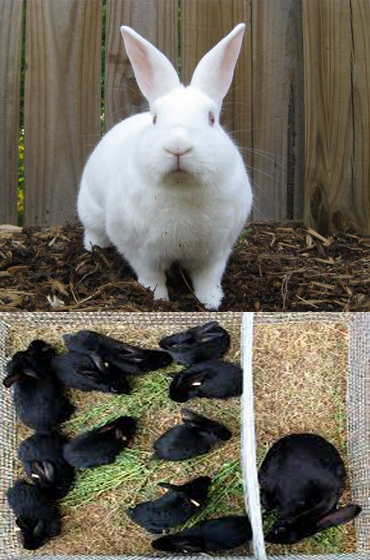
| Total Expense Cost Each rabbit | |||||
|---|---|---|---|---|---|
| S.No | Rabbit | Feed | Gram/kg | Per day Exp | Amount |
| 1 | 100 Rabbit M/F | Solid feed | 120 gm per day | 3/- Rs per rabbit | 300 /-Rs. Per day |
| 2 | 100 Rabbit M/F | Hey feed | 50/60 to gm per day | 0.25 paisa Rs per rabbit | 25/- Rs. Per day |
| 3 | 100 Rabbit M/F | Green feed | 200 gm per day | 0.50 paisa Rs per rabbit | 50/- Rs.per day |
| S.No | Rabbit Female | Time | Birth Bunny Rabbit | Gestations |
|---|---|---|---|---|
| 1 | 01 | 01 | 06 | 28-31 Day |
| 2 | 70 | 01 | 420 | 28-31 Day |
| 3 | 70 | 07 | 2940 | 28-31 Day |
| S.No | Total Rabbit Expense cost | Per Day Expense | 3 Rs. 75 Paisa | Sale | Profit |
|---|---|---|---|---|---|
| 1 | Total Bunny Rabbit | 420*3.75 Rs | 1,575/- Rs. per | ||
| 2 | Total Bunny Rabbit 70-day feed cost | 1575*70 Rs | 1,10,250/-Rs | ||
| 3 | Total Sale cost 420 rabbits (2.5 kg Each rabbit) | 1050*250/- Rs | 2,62,500/- Rs. | ||
| Total Net Profit after 1 Time | 1,52,250/- Rs |
10 Unite Expense Productions cost.
2 and 3 Month average rabbit weight is 2.5 kg per Rabbit.
Purchasing Prize of 250 Rs. Per kg. Live Body weight.
After 8 Time 152250 Rs. * 07 times = 1065750/- Rs per annum
Monthly Income 1065750/12 = 88813/- Rs. Per month Approx. and above
Note: This Income is over Farmhouse.
Rabbit Breed Used For Farming in India for Meat Purpose
It is white in color and its skin color is pink. Eyes are red in color and size is medium. The female rabbit give birth to about 6 or more babies at a time. Its weight would be 2 kg in 2 to 3 months and the weight of an adult rabbit would be 3.5 to 4 kg.
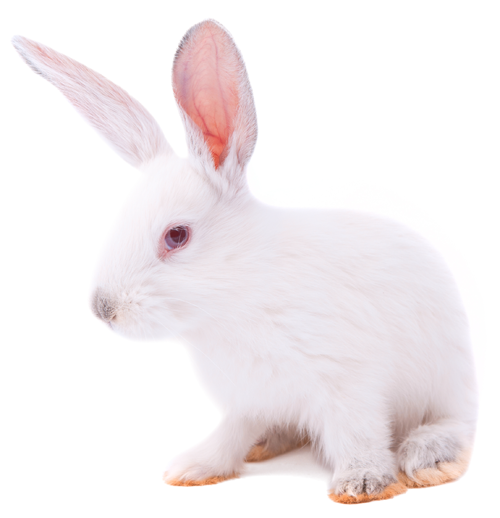
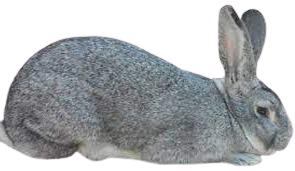
The color of the hair of this rabbit is black and white mix and the color of the eyes is black. The skin also resembles black in color. Rabbit of this breed also give birth to about 6 or more babies at a time. Its weight is 2 kg in 2 to 3 months and the weight of an adult rabbit is 3.5 kg to 4 kg.
Its hair and skin are white in color but its eyes are red in color. This breed is resembles to New Zealand White But the back legs are long and the body is heavy. Its weight is 2 kg in 2 to 3 months and the weight of adult rabbit is 3.5 to 4 kg.

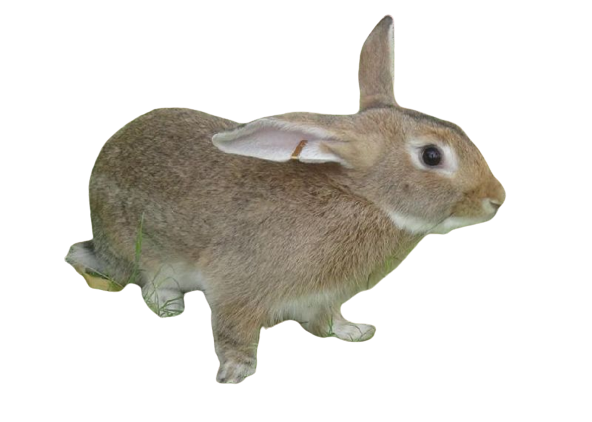
The color of the hair of this rabbit breed is dark brown and the color of the skin is black, the eyes are brown. Its weight is 2 kg in 2 to 3 months and adult rabbit's weight is 3.5 kg to 4 kg.
The rabbits of this breed are black in color, their hair, eyesand skin are black. Rabbit of this breed also give birth to about 6 or more babies at a time. Its weight is 2 kg in 2 to 3 months and the weight of an adult rabbit 3.5 to 4 kg
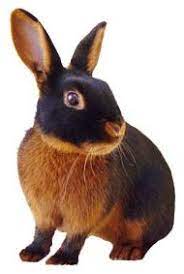
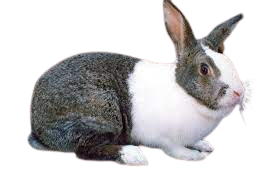
Rabbits of this breed are of two colors, the half part of the front body is white and the back half is brown. Its weight is 2 kg in 2 to 3 months and the weight of adult rabbit is 3.5 to 4 kg.
How to Start Rabbit Farming in India
It is becoming a more profitable employment in the form of part time income which can be easily done by the women and children of the household. This can be done commercially by building big and small farm house, which will get you an employment and also a source of income. We are sharing the important information about how to start rabbit farming in India.
Special provisions are required to start rabbit farming in India . Clean air circulation is necessary in rabbit farm because it will make the environment of farm clean and pure. The wall of the rabbit farm should be of a height of 3 to 4 feet from all four sides. So as to protect rabbits from heat in summer and from cold wind in winter. Rabbit farm should have V shaped top surface structure. Due to which the temperature of summer and winter in Rabbit Farm remains normal. Having a nutritious diet is very important in rabbit farming. Just as nutrients like proteins, calcium, healthy fats, vitamins and carbohydrates are essential for a healthy body, Similarly nutritious diet is necessary for rabbits also. If nutritious food is not available to the rabbits than rabbits body has to face many kinds of diseasecausing illness and death to the rabbit.
Cage system of rabbit farming in India has a special place in the best practice and the risk is also less in this.The cage has a special importance in rabbit farming. Its structure and construction should be done by skilled craftsmen. So that the rabbits do not have any kind of internal harm and the door of the rabbit cage can open easily, this design and construction can be done only by a skilled craftsman.
For starting this business of rabbit farming, it is very necessary to take information. A lot of care is needed for starting rabbit farminglikeclean water, green fodder and nutritious food according to the season. In rabbit farming, special care has to be taken for maintaining the temperature.Thelife spanof the rabbit is 7 to 10 years. To provide energy to their body rabbit start their day by eating the first mammy, this supplies energy to the female rabbit and it gives birth to 110 to 130 babies in her life. Rabbit babies gain weight very fast a rabbit weighs 2 to 3 kg in 2 to 3 months. The breeding of female rabbits has a special role under rabbit farming of cage system. The menstrual cycle of a female rabbit occurs every 14 to 16 days, and breeding a female rabbit between second and third day is 100% successful. It is also difficult to know when the female rabbit's menstrual cycle beginsyou can get this information from an expert. The female rabbit gives birth to 7 to 12 bunnies at a time. Before giving birth the female rabbit makes a nest for the babies by plucking the hair from the body and at the same time after that the female rabbit breastfeeds the babies by itself. The weight of babies at the time of birth is 50 to 70 grams because from the time of birth the eyes of children do not open for 7 to 10 days. No vaccine is required for rabbits.
Green Fodder for Rabbit Diet
The fibrous material used in rabbit diet is relatively high in fiber and digestible.Nutrients such as carbohydrates, proteins, fats, minerals, vitamins, etc., are in less quantity.
Jai contains about 11 to 13% protein and 25% fibrous material. It can be added 50% in rabbit diet but only 25% should be fed for best results.
It is also a good grass for cold regions. Once grown, it automatically grows every year.In this, the amount of protein is 8 to 10% and fibrous material is 30 to 40%, it is considered 15 to 20% suitable in rabbit's food.
This green fodder grows in the monsoon season, it can be included in the rabbit diet up to 20 to 25%.If it is cut green before ripe and dried to keep in small form, and then it works as an excellent fooder in winter days. It has been observed that when maize and Libya are grown together, its nutritive potential increases.
It is a leguminous grass that grows at different times in different climates. In plains where the temperature is high, it can be grown and harvested from December to April. But in cold regions it can be grown only from March to June. It contains 18 to 22% protein and 20 to 25% fibrous material.50% of it is included in the rabbit's diet.
It is a very beneficial tree growing in temperate climate which provides fodder not only for silkworms but also for rabbits. Its leaves contain 13 to 16% protein and 4 to 6% fat. These can be added 35 to 40% in rabbit diet.
Apart from this, vegetables left in the kitchen like peas, cabbage, radish, carrots, turnip peels and mustard and spinach coriander leaves can also be fed to the rabbit. While feeding these things, one thing should always be kept in mind that it should be clean and mix them with the other fodder and should be given to the animals in little quantity. Feeding the mixed fodder to animals in excess can prove to be harmful. Gram, soybean, urad, kidney, lentil, peas, cabbage etc. are such leguminous crops, whose skin, soft leaves and dry vine obtained while removing the grains, provide very nutritious food which can be fed to the rabbit as vegetables.
While feeding green fodder to the rabbit, it should always be kept in mind that the fodder should not be completely green, after cutting the green fodder it should be kept in the sun for 2 to 3 hours, after that it should be fed otherwise it causes diarrhea in rabbit. Do not feed all the legumes completely green, because it makes foam in the intestines due to its abundance in protein and water. And causes infinite trepidation in rabbit .Put the fodder only in the evening so that he can eat comfortably throughout the night.
The main purpose of rabbit farming in India is to rear it for meat. And rabbit skins are used to make women's purses baby jackets and warm shawls and wool. Rabbit meat has very little cholesterol; its meat has the highest protein content compared to other meats. Its meat is very beneficial for our healthy body, which gives our body the strength to fight against many diseases.
Other Details Are
- Additional Information
- Nutrients To The Rabbit Feed
- Sample Feed Mixture
- Forest NOC of Rabbit Farming
- National Livestock Mission
Packaging Details
| S.No | Cages size | Unit | Length | Width | Height | Medicines | Delivery | Agreement |
|---|---|---|---|---|---|---|---|---|
| 1 | 1 Unit cage | 1 Unit = 10 rabbits | 9 feet | 4 feet | 1 feet 3 inches | Medicines | Home delivery | Buyback agreement |
Minimum Order Quantity
The Minimum Order Quantity Should be 50
Delivery Time
15-20 days
| Nutrients To Be Present In The Rabbit Feed | Amount feed/ day (g) | |||||||
|---|---|---|---|---|---|---|---|---|
| S.No | Details of nutrients | For growth | For pregnancy | For lactation | Rabbit type | Approximate body weight | Concentrate feed | Green fodder |
| 1 | Digestible energy (K.cal) | 2500 | 2500 | 2500 | Adult male rabbit | 4-5 kg | 100 | 250 |
| 2 | Protein (%) | 18 | 17 | 19 | Adult female rabbit | 4-5 kg | 100 | 300 |
| 3 | Fibre (%) | 10/13/12 | 10/13/12 | 10/13/12 | Lactating and pregnant rabbit | 4-5 kg | 150 | 150 |
| 4 | Fat (%) | 2 | 2 | 2 | Young rabbits | 0.6-0.7 kg | 50-75 | 150 |
| Sample Concentrate Feed Mixture | ||
|---|---|---|
| S.No | Ingredients | Amount |
| 1 | Broken maize | 30 % |
| 2 | Broken and ground bajra | 13 % |
| 3 | Groundnut oil cake | 25 % |
| 4 | Wheat bran | 25 % |
| 5 | Mineral mixture | 1.5 kg |
| 6 | Salt | 0.5 kg |
